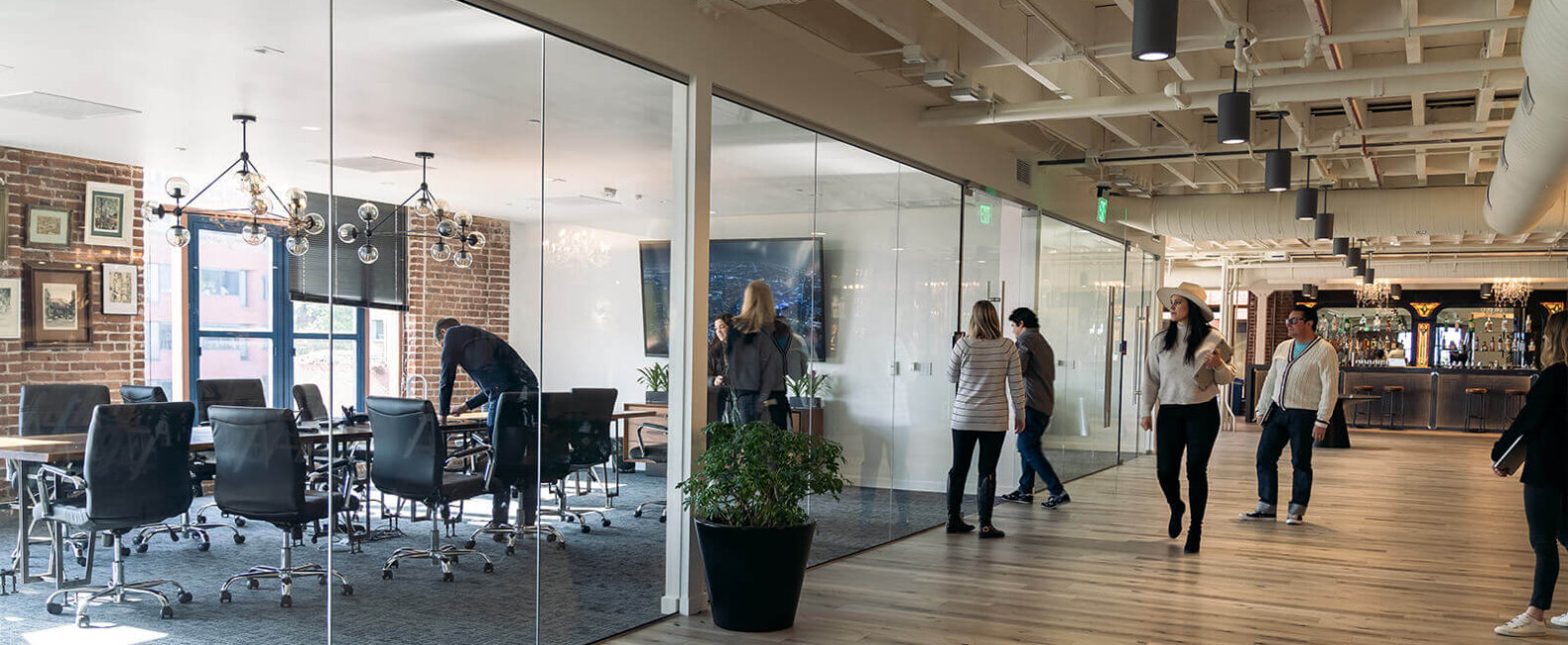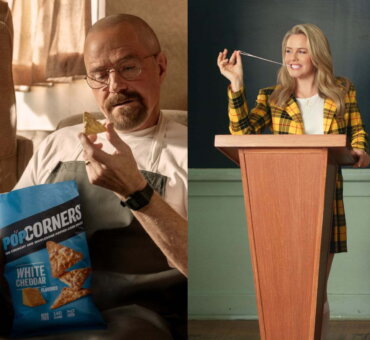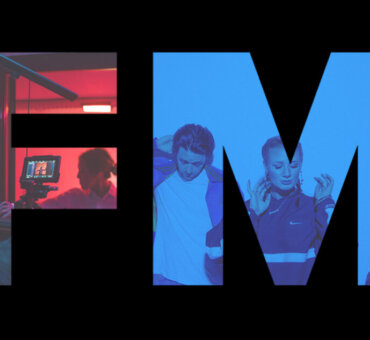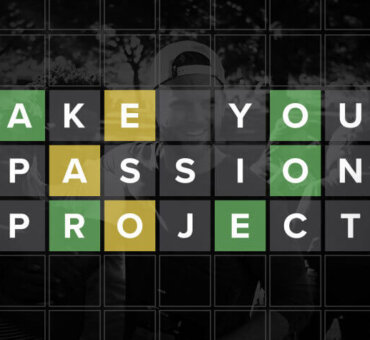With the speed at which advertising is evolving, there’s no room for complacency. You adapt, or you fall behind. Anyone who has worked in the agency world knows the feeling: the nagging inner voice that, even after sleepless nights of working and reworking, never misses an opportunity to ask whether or not you actually took that project as far as you could’ve.
Fear of all-things-average is, at once, the bane of creativity—and the driving force behind it. We wanted to further dig into this idea, so we talked to seven industry-leading creatives on reaching the top and staying there.
Here are seven fundamental truths we gathered from our conversations.
1. Set Ambitious Goals
Sometimes, finding your purpose means losing your way. That very path led Creative Director Danny Hunt to reinvent an iconic holiday catalogue with his award-winning ‘Book of Dreams’ campaign for Argos. Following his return from paternity leave and a change in jobs, Danny felt himself slipping into complacency—then, he boldly challenged himself.
I’d taken a bit of time off for parental leave when I had my second kid. During that time, I hatched a plan. When I came back, I wanted Argos. I wanted to win Christmas. That was my main plan. We went out for coffee with ECDs and I said, “I’ve been away. I want a new account with Argos.”
They could see the hunger, that I wanted to do something with it. And then, they gave us a crack on it. The first two ads built a relationship with the client. With the Christmas campaign, I saw an opportunity to try and win Christmas and create the best ad. I literally put on the brief that we meant to win Christmas.
Having a purpose professionally and in life as well, is really important. In my career, I’d lost my way for a few years. I felt like I bumbled around from brief to brief. I was drifting around. Then, I set this 12-month goal and it really focused my thinking. It probably made me a bit braver as well. I’m always pretty bold with everything that I do. But, it definitely gave me a focus and gave me a drive. You need a purpose.
2. Aim High and Stay Audacious
While facing pressure to create bold work, CCO Noel Cottrell earned a spot on the Adweek 100 list, and won his agency VMYL&R 11 Cannes Lions—in 2019 alone. In our conversation with Noel, he broke down why trusting your gut when pitching big ideas will pay off.
One of the things I always tell junior creatives is, ‘There are no bad briefs. Every brief that comes in the door is an opportunity.’
A new brief for a single radio spot came in from Coke: the idea was to relaunch the Coke names on cans, to say that now there were 1,000 different names on Coke cans. That was the brief. But, [my team] came back to me and presented the idea of doing one thousand songs, a song for every name. And I remember saying, “Guys, it’s a radio brief. The client has like $5,000 for the whole thing.” I thought they were joking.
But, luckily, I had some great Coke clients. Obviously, we couldn’t have a client meeting for every song, so we decided to make it fun. We’d take the clients to lunch, put headphones on them, and they’d listen to the songs. It took us a long time, but we got all of them done.
It was a big turning point for the agency. The amount of publicity and fame it got in the moment changed the perception of the agency.
3. Find Your Voice and Stay True to It
Over the course of 30 years in the ad industry, ECD at The New York Times’ T Brand Studio, Vida Cornelious, has come to understand what it takes to create culture-changing campaigns: authenticity. That means first finding what’s important to you—then, letting that lead the ideas you develop. Vida came to realize this while working on a Super Bowl ad for Jeep.
It’s so important to find your voice as a creative. The industry may tell us to chase a trend or a fad, to run towards that shiny object. But, the best way to get authentic work out of yourself and make things you’re really proud of is to be true to your voice. And be true to the message that you’re putting out. Make sure the message is authentic, thoughtful, and has an empathetic reason to exist.
With the Jeep project, the brand itself always lived in a space of freedom. Freedom for their general consumer meant freedom to go where they wanted. But, freedom for people of color and indigenous peoples has a very different meaning. Freedom means expression. It means the ability to succeed. It’s tied very much to the historical context of those individuals.
So, when we were thinking about how to revamp the brand for them, we had to reframe freedom in a context that worked for both segments. It became an inclusive message based on understanding an insight into other audiences.
It took some time to get there. But, as a creative, when I feel like I’ve got the words right, I usually get a little bit of a tingle in my neck when I read it to myself out loud. That’s when I thought, ‘Ok, this might be going somewhere.’
4. Stop Caring
At Pereira O’Dell, Rob Lambrechts and his team have been fundamental in ushering in a new kind of long-form advertising, where the personal feels universal. But, Rob is living proof that no matter how celebrated your work is, it’s even more essential to find a sustainable way to be creative. While working on Intel’s long-form “What Lives Inside” series, Rob learned to simply stop caring so much.
I don’t think I’ve told many people about this, but I was considering leaving advertising during that time. In a lot of ways, I’d made up my mind that I was done. So, when I wrote that piece, I almost gave up—I didn’t really care what anybody thought. I thought, ‘I’m going to write this and if people like it, cool. If they don’t, I don’t care because I’m leaving.’
But, people did like it, and then the story became the film. The whole experience made me realize, maybe the issue is not with the industry, maybe the issue is with me. I need to stop worrying about what people think, start developing what I think is interesting, and make it personal. In a lot of ways, that has revived my passion for the industry and my career in it.
You realize in [advertising] that nine out of 10 ideas are bad. Even the ones that are good sometimes end up being bad. It’s important to be okay with having a bad idea. That should happen in an agency or any creative environment. Take something that’s interesting, even if it’s a bad idea, and build upon it and change it. Then, it becomes a great idea when you work together in that environment.
5. Embrace Collaboration
DAVID Miami has been on a red-hot winning streak for the past decade, in large part, due to the iconic campaigns developed by Fernando Pellizzaro and his team. Like using pictures of a moldy Whopper® to give Burger King’s brand image a lift—sparking a health-centric movement throughout the fast food industry in the process. When we spoke with Fernando, he detailed how effective collaboration can lead to the best possible work.
Moldy Whopper was part of something very big that Burger King was building. We worked very hard on this brief because it was a huge opportunity for us to do something for BK US. But, Burger King wasn’t ready because they were still in the process of removing the artificial ingredients from their burgers. We pushed the idea many, many, many times. But, the project was on hold. Then, Sweden was the first market to achieve that goal of having a preservative-free Whopper.
There’s an agency in Sweden who had a similar idea, so we decided to start working together. Then, Publicis came with a similar idea, but with a different approach of executing. So, we ended up working together, the three agencies. We all had our contributions to the project and that’s what you see now.
Everyone was looking to do the best work, and gave a direct contribution to the process. This kind of work teaches you a lot. Never give up and always try to find a solution to make an idea happen. In this case, the solution was to partner with two other agencies to find a market that was already ready to launch the idea. Work as a team and win as a team.
6. Expect the Unexpected
Great producers typically share a couple of key traits: meticulous attention to detail and an insatiable hunger for new experiences. That mentality has taken Josh Hillman from a freelance PA to Senior Producer at TCO London. You can’t prepare for every problem that arrives, and here’s why Josh believes expecting the unexpected is so important.
I always say to our team, ‘You know that one thing you think will be fine? It won’t be fine. That thing is going to be the problem, even if you think it’s trivial.’ You’re going through your production to-do list and you see that someone will be there 7 a.m. to open up the location. Then you think, ‘Wait, is that normal for them? Are they going to be there? Who’s the person? Can we get their mobile number?’ You just can’t assume. You need to think about that one thing you think will be fine. Because that’ll be your problem.
Production is one of those careers where you get exposed to all these really amazing characters and experiences. I’ve had some of the funniest problems pop up. That’s the gig. You just have to find a solution, stay super motivated and be organized. Make those solutions your own.
7. Find the Deeper Truth Behind Your Work
Advertising becomes so much more personal when the work is rooted in something close to your heart. Odds are, many people will have the same feelings that inspired your idea to begin with. That level of authenticity is exactly what CCO at GS&P, Margaret Johnson, tapped into for a campaign that became the defining moment of her career.
The project that’s had the most impact on me recently is called Lessons in Herstory. It was really born out of a conversation with one of the strategists at Goodby Silverstein & Partners. We were talking one day, and she said, ‘You know, I just saw a stat that only 11 percent of the stories in US history books are about women. Don’t you have a daughter?’ I said, ‘Yeah.’ And she said, ‘We should fix that.’ We were off and running on the project from that point.
We created an augmented reality app. You can download it for free in the App Store. It’s so simple and seamless. If you hover over a picture of a famous man in a U.S. history book, say Abraham Lincoln, an equally cool story about a woman at that same time will pop up through AR. You can learn all about what she did during that same time period. It’s really about the forgotten women of history.
So if I were going to give advice to young creatives, I’d say you have to make sure that the work is connected to a deeper truth. In this case, there was an injustice woven into our culture, and we knew we could help change it.
Read how the team at Stink Studios built a Grammarly campaign entirely out of Filmsupply Footage.






